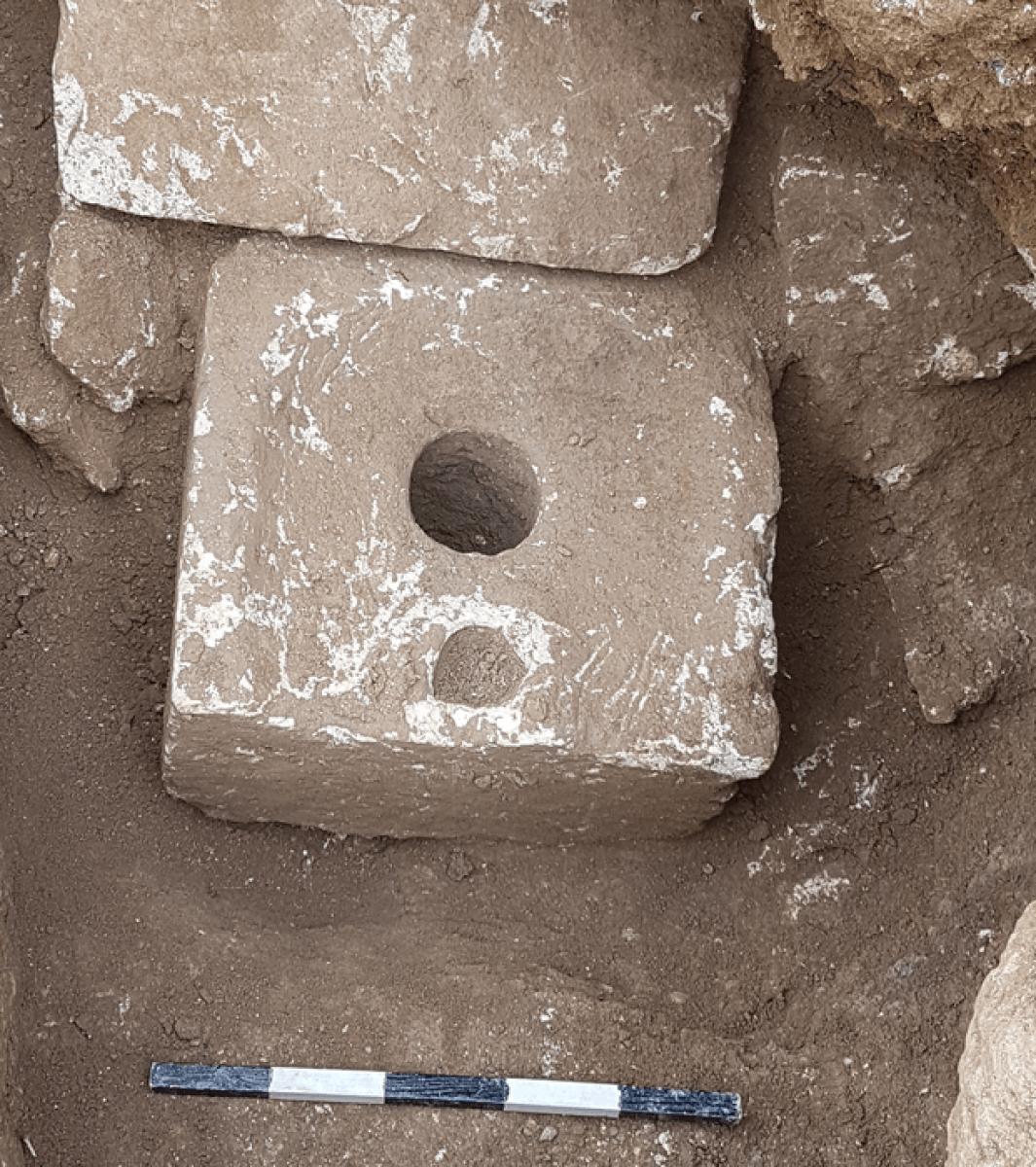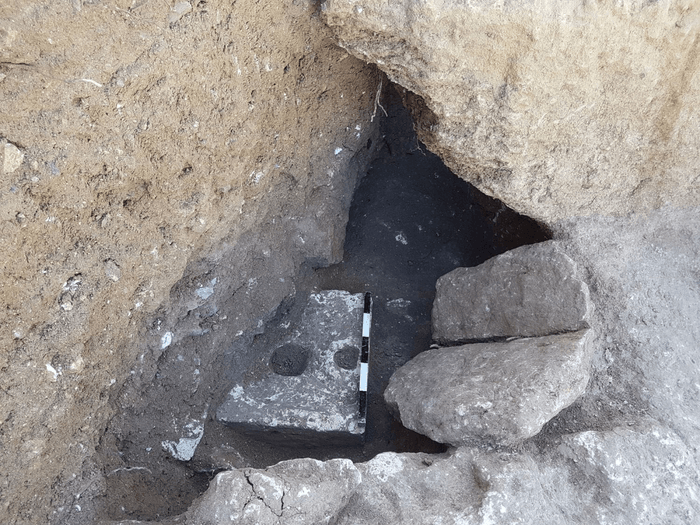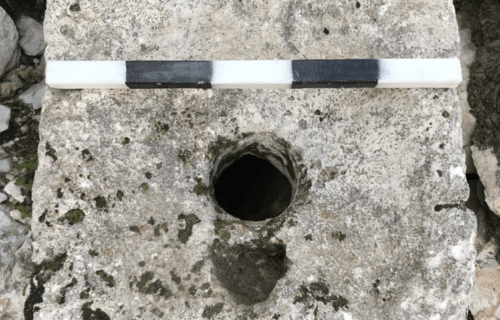CAMBRIDGE, United Kingdom — The potentially fatal infection dysentery was widespread in Old Testament Jerusalem, according to a new study analyzing ancient toilets. The study, which examined 2,500-year-old samples from two latrines in the city dating back to the biblical Kingdom of Judah, found traces of Giardia duodenalis, a single-celled microorganism that commonly causes debilitating bouts of diarrhea.
Led by scientists from the University of Cambridge, the team asserted that this is the oldest known evidence of this diarrhea-causing parasite infecting humans.
“The fact that these parasites were present in sediment from two Iron Age Jerusalem cesspits suggests that dysentery was endemic in the Kingdom of Judah,” says Dr. Piers Mitchell, the study’s lead author and member of Cambridge’s Department of Archaeology.
“Dysentery is a term that describes intestinal infectious diseases caused by parasites and bacteria that trigger diarrhea, abdominal cramps, fever and dehydration. It can be fatal, particularly for young children,” Mitchell adds in a media release.
“Dysentery is spread by feces contaminating drinking water or food, and we suspected it could have been a big problem in early cities of the ancient Near East due to over-crowding, heat and flies, and limited water available in the summer.”
The fecal samples were extracted from sediment under toilets found in two building complexes south of the Old City. These date back to the 7th Century BC, when Jerusalem served as the capital of Judah. At the time, Judah was a vassal state under Assyrian Empire control. Jerusalem was a thriving political and religious hub with an estimated population of 8,000 to 25,000 residents.
Both toilets had similar carved stone seats featuring a shallow curved surface for sitting, a large central hole for defecation, and an adjacent hole at the front for male urination.
“Toilets with cesspits from this time are relatively rare and were usually made only for the elite,” Mitchell says.
Scroll down to see why toilets were the original symbol of the rich and famous

One toilet was found in a lavishly decorated estate at Armon ha-Natziv, surrounded by an ornamental garden. This site, excavated in 2019, likely dates from King Manasseh’s era, a client king for the Assyrians who ruled for 50 years. The other was located in the House of Ahiel, a domestic building composed of seven rooms housing an upper-class family.
While its construction date is hard to determine, experts suggest it might be around the 8th Century BC. However, its destruction is confidently dated to 586 BC, when Babylonian ruler Nebuchadnezzar II sacked Jerusalem after its citizens failed to pay their agreed tribute, ending the Kingdom of Judah.
Ancient medical texts from Mesopotamia during the first and second millennium BC describe diarrhea affecting the population of what is now the Near and Middle East. For example, one text reads, “If a person eats bread and drinks beer and subsequently his stomach is colicky, he has cramps and has a flowing of the bowels, setu has gotten him.”
“These early written sources do not provide causes of diarrhea, but they encourage us to apply modern techniques to investigate which pathogens might have been involved,” Mitchell continues. “We know for sure that Giardia was one of those infections responsible.”

The research team used a biomolecular technique called “ELISA” to study the decomposed biblical period feces. This technique employs antibodies to bind onto the proteins produced by specific single-celled organisms.
“Unlike the eggs of other intestinal parasites, the protozoa that cause dysentery are fragile and extremely hard to detect in ancient samples through microscopes without using antibodies,” explains co-author and Cambridge PhD candidate Tianyi Wang.
The researchers tested for three parasitic microorganisms commonly causing diarrhea in humans and linked to dysentery outbreaks: Entamoeba, Giardia, and Cryptosporidium.
According to the findings, tests for Entamoeba and Cryptosporidium were negative, but Giardia tests were repeatedly positive. Previous research has found evidence of the Entamoeba parasite, another cause of dysentery, in Neolithic Greece over 4,000 years ago.
Other studies have revealed that the users of ancient Judean toilets suffered from various other intestinal parasites, including whipworm, tapeworm, and pinworm. These findings highlight the public health challenges that existed in early urban societies and the enduring struggle against parasitic diseases.
The findings are published in the journal Parasitology.
Living with worms for life!
A previous study on the toilets, parasites, and hygiene practices during this time suggested that people in Iron Age Jerusalem likely suffered from parasites for life. They were probably an annoying and long-lasting infectious disease, similar to lice and pinworms in young children today. However, researchers say this epidemic affected the entire population.
Worms still exist today, but modern medicine can quickly diagnose and treat people with these parasites, so they don’t spread.
While today’s rich and famous often show off their wealth in flashy cars or expensive clothing, study authors say having a toilet was the real luxury item of ancient civilization.
“Toilet facilities were extremely rare at that time and were a status symbol – a luxury facility that only the rich and high-ranking could afford,” Dr. Dafna Langgut and the Israel Antiquities Authority’s Ya’akov Billig explain.
Worms were still a problem in 1800s America!
While Americans may take things like a working toilet for granted today, another study from 2021 found unsanitary conditions were still everywhere during life in the 1800s. Researchers from Dartmouth College reported fecal samples reveal even America’s rich, upper class suffered from intestinal parasites during this era.
Study authors made the discovery after excavating the former site of an outhouse in front of Dartmouth’s Baker-Berry Library. The old privy belonged to the residents of the Ripley/Choate House, which previously stood on the grounds of the library.
Despite their wealth and influence, the study revealed some of the same “bathroom drama” researchers would expect to find in lower income areas — as well as ancient dig sites. Not only did the team unearth bottles containing digestive health elixirs, but fecal fossils still contained eggs of parasitic organisms — like tapeworms.

South West News Service writer Stephen Beech contributed to this report.

